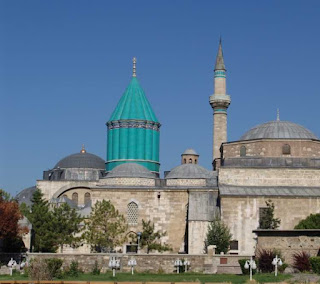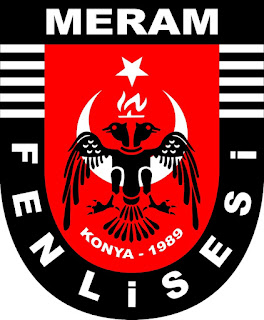TYPES OF TOURISM IN KONYA
Hello our precious readers, today Muhammed Semih and I are going to tell you about the types of tourism in Konya for you.
1. Religious Tourism:
Mevlana Museum and Mausoleum:
Located in the heart of Konya, the Mevlana Museum and Mausoleum is one of the most significant centers of religious tourism worldwide. This site served as the central hub of the Mevlevi Order, established after the passing of Mevlana Celaleddin Rumi. The mausoleum offers visitors a spiritual atmosphere, providing a profound understanding of Mevlana's life, teachings, and works. The museum within the complex houses a collection showcases Mevlana's personal belongings, manuscripts, and other valuable artifacts. Visitors can witness whirling dervish performances, explore the surroundings of the mausoleum, and spend time in an environment conducive to inner peace.
2. Historical Tourism:
3. Gastronomic Tourism:
4. Archaeological Tourism:
5. Health Tourism:
In this blog ,we tried to tell you about the types of tourism in konya. Thank you for reading up to here. See you in another blog.
Enjoy your reading.
Mevlana Museum and Mausoleum:
Located in the heart of Konya, the Mevlana Museum and Mausoleum is one of the most significant centers of religious tourism worldwide. This site served as the central hub of the Mevlevi Order, established after the passing of Mevlana Celaleddin Rumi. The mausoleum offers visitors a spiritual atmosphere, providing a profound understanding of Mevlana's life, teachings, and works. The museum within the complex houses a collection showcases Mevlana's personal belongings, manuscripts, and other valuable artifacts. Visitors can witness whirling dervish performances, explore the surroundings of the mausoleum, and spend time in an environment conducive to inner peace.
2. Historical Tourism:
Alaaddin Hill:
Alaaddin Hill, the highest point in Konya, is a historical and spiritual center of the city. Throughout history, it has witnessed significant events and housed historical structures from the Seljuk period to the present day. The remnants of Alaaddin Keykubat Mosque are found on the hill, constructed by Seljuk Sultan Alaaddin Keykubat. The hill offers a panoramic view of the city with its historical castle walls. Visitors can climb to the top to observe the historical fabric of the city and capture memorable photographs.
3. Gastronomic Tourism:
Meat Bread (Etli Ekmek):
A famous delicacy of Konya, meat bread is a dish made with thin dough topped with minced beef, onions, and spices. This dish has become a symbol of Konya's traditional cuisine and is served in various restaurants throughout the city. Meat bread is a favorite taste among both locals and visitors, representing the gastronomic richness of Konya that everyone interested in exploring should try.
4. Archaeological Tourism:
Çatalhöyük:
Located in the southeast of Konya, Çatalhöyük is one of the world's oldest settlements and is considered an important archaeological site from the Neolithic period. The site contains numerous archaeological findings shedding light on a significant era in human history. Excavations at Çatalhöyük have revealed important artifacts such as Neolithic houses, temples, agricultural tools, and decorative items. Visitors can embark on a unique journey through humanity's past by exploring this site and discovering the exciting world of archaeology.
5. Health Tourism:
Konya Thermal Springs:
The thermal springs scattered across various regions of Konya make it an ideal destination for thermal tourism. Thermal waters offer numerous health benefits and support the natural healing process. Konya's thermal springs are visited for their therapeutic properties against conditions like rheumatism, skin problems, and respiratory infections. Guests can relax in thermal pools, avail spa services, and alleviate stress.
6. Art Tourism:
Karatay Medrese:
Karatay Medrese, a significant work from the Seljuk period, is now utilized as the Seljuk Art Museum. This historical structure showcases one of the finest examples of Seljuk architecture and presents visitors with a rich art collection. The museum exhibits manuscripts, miniatures, ceramics, and other artworks from the Seljuk era. Those visiting Karatay Medrese can witness the elegance and aesthetics of Seljuk art up close.
Various cultural events and festivals in Konya offer visitors the opportunity to experience the vibrant cultural life of the city. Particularly, the Şeb-i Arus Celebrations, commemorating the anniversary of Mevlana's death, are filled with whirling dervish performances, concerts, exhibitions, and conferences. These events celebrate Mevlana's philosophy, music, and art, providing visitors with an unforgettable cultural experience.
8. Winter Tourism:
8. Winter Tourism:
Sultan Mountains:
Located in the south of Konya, Sultan Mountains are a popular destination for winter tourism. The area offers an ideal environment for activities such as skiing, snowboarding, sledding, and other winter sports. Ski resorts in the Sultan Mountains feature slopes of varying difficulty levels and modern facilities. Winter sports enthusiasts can have an enjoyable time and savor the delights of snow.
9. Aya Elena Church:
A historical and cultural structure in Konya, this church holds significance for those adhering to the Christian faith. Named after Saint Helena, the mother of Byzantine Emperor Basil II, the church is a significant religious and historical site. The church is believed to date back to the Byzantine era and was converted into a mosque during the Seljuk period. Later, it was repurposed as a church during the Ottoman era. Its rich history makes the church important from both historical and cultural perspectives. The architecture and interior decoration of Aya Elena Church reflect influences from the Byzantine and Seljuk periods. Frescoes and mosaics inside emphasize the church's religious importance and historical value. Visitors can explore the interior, witness these works of art up close, and experience the historical atmosphere of the church. Aya Elena Church stands as a significant point for religious tourism in Konya, offering visitors a journey through both history and religion.
In this blog ,we tried to tell you about the types of tourism in konya. Thank you for reading up to here. See you in another blog.
Muhammed Semih Uzun & Mustafa Büyükdalda





.jpg)




Comments
Post a Comment